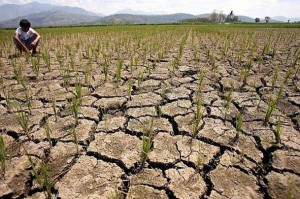 Bohol needs the rain in two weeks before the farmlands completely dry up to a crack-riddled surface when dam water level would drop to a critical level.
Bohol needs the rain in two weeks before the farmlands completely dry up to a crack-riddled surface when dam water level would drop to a critical level.
Gov. Edgar Chatto confirmed having received reports that it is just a matter of one to two weeks and the water level in the dams would drop if there would be no rain during the period.
As already tested since 2012, cloudseeding can save the agriculture sector, according to the governor.
As of now, the National Irrigation Administration is closely monitoring the dams now to be able to decide when to adopt measures, one could be dividing the irrigation schedule, to avoid draining the dam water and saving the ricefields as well.
The governor also said he made rounds to the towns recently and indeed noticed that some farmlands and ricefields are almost drying up.
He said the provicial government, the Office of the Provincial Agriculturist, and the Department of Agriculture will again conduct cloudseeding just like in the previous years when dry spell beset the province during summer.
According to the governor, cloudseeding saved the farmlands from the dry spell in 2012 when his administration first requested it from DA, because it was done on time.
During that time, Bohol even registered high rice produce, while the other provinces in the country had negative harvest because of the dry spell.
So far, the Malinao dam in Pilar—the biggest irrigation facility in the province—still has sufficient volume of water, according to NIA-7 Regional Manager Mario Sande.
However, NIA-7 regional office based in Tagbilaran City and the Office of the Provincial Agriculture already prepared proposals for a cloudseeding to be submitted to DA anytime when the situation already calls for it.
Aside from bailing out the farmlands from complete destruction, the rain to be produced from cloudseeding will also serve well for the next cropping season.
The Regional Development Council, chaired by Chatto, also discussed the impact of the dry spell during the full council meeting in Cebu City last week, following reports about several farms that had dried up and already showing cracked surface in some areas in Bohol and Cebu.
Larry Pamugas, officer-in-charge at the Office of the Provincial Agriculturist, earlier said
Bohol has over 47,000 hectares of ricefields—25,000 hectares irrigated and 22,000 hectares rainfed; while corn fields cover over 14,000 hectares.
These areas are now being closely monitored to track down the impact of the dry spell.
